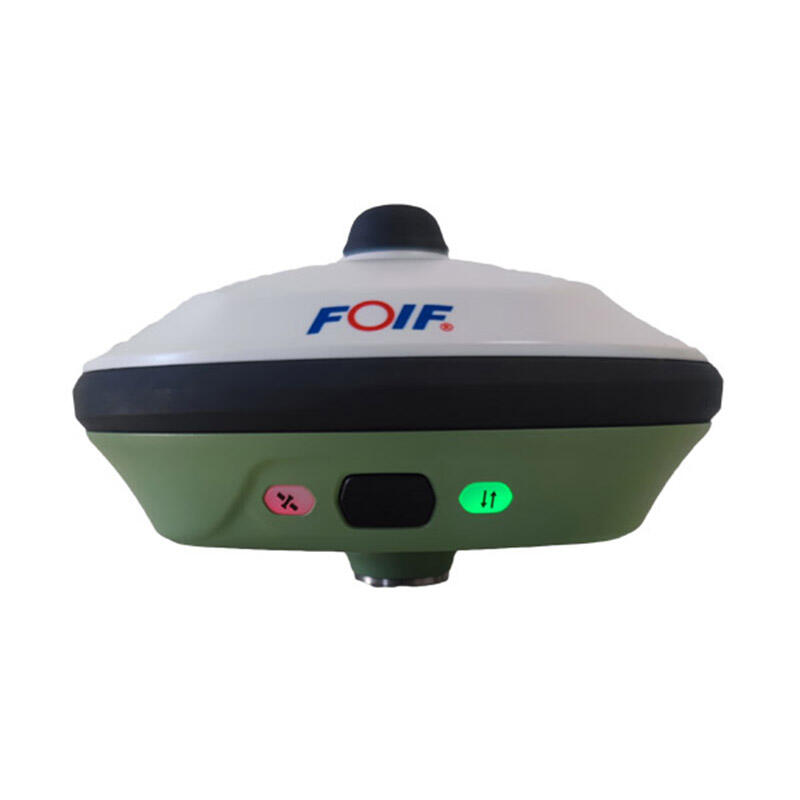Maximizing Precision Through Professional GNSS Calibration
In the world of global navigation satellite systems (GNSS), accuracy is everything. GNSS receiver calibration stands at the forefront of ensuring reliable positioning, navigation, and timing services across various industries. From surveying and mapping to precision agriculture and autonomous vehicles, proper calibration of GNSS receivers determines the success of countless operations worldwide.
Modern GNSS applications demand increasingly higher levels of accuracy and reliability. Whether you're conducting high-precision surveys or managing a fleet of vehicles, understanding and implementing proper calibration procedures can make the difference between mediocre and exceptional performance. This comprehensive guide explores the essential aspects of GNSS receiver calibration and provides valuable insights for achieving optimal results.
Understanding GNSS Receiver Calibration Fundamentals
The Science Behind Calibration
GNSS receiver calibration involves a systematic process of comparing measured values against known standards and making necessary adjustments to ensure accuracy. This process accounts for various error sources, including atmospheric effects, multipath interference, and hardware biases. By understanding these fundamental principles, technicians and operators can better appreciate the importance of regular calibration procedures.
The calibration process typically involves both internal and external factors. Internal calibration addresses hardware-specific parameters, while external calibration considers environmental conditions and satellite geometry. This comprehensive approach ensures that all potential sources of error are identified and corrected.
Key Components Requiring Calibration
Several critical components within a GNSS receiver require regular calibration attention. The antenna phase center, signal processing channels, and timing circuits all play vital roles in overall system accuracy. Each component must be carefully calibrated to work in harmony with others, ensuring optimal performance across all operating conditions.
Modern GNSS receivers also incorporate sophisticated error compensation mechanisms that require periodic adjustment. These include temperature compensation circuits, multipath mitigation algorithms, and internal clock synchronization systems. Regular calibration of these components helps maintain the receiver's specified performance levels throughout its operational lifetime.

Essential Steps for Proper Calibration
Pre-Calibration Preparation
Successful GNSS receiver calibration begins with thorough preparation. This includes selecting an appropriate calibration site with clear sky visibility and minimal interference sources. Environmental conditions should be carefully documented, and all necessary equipment should be verified for proper functioning before beginning the calibration process.
The calibration site should ideally be a known reference point with accurately surveyed coordinates. This provides a reliable baseline for comparing receiver measurements and calculating necessary adjustments. Additionally, operators should ensure that all required software updates and firmware versions are current before proceeding with calibration.
Calibration Procedure Implementation
The actual calibration process follows a structured sequence of measurements and adjustments. This typically begins with static observations at known points, followed by dynamic testing under various conditions. Careful documentation of each step ensures reproducibility and helps track the receiver's performance over time.
During calibration, it's essential to collect data over sufficient periods to account for variations in satellite geometry and atmospheric conditions. This comprehensive approach helps ensure that the calibration results remain valid across a wide range of operating scenarios.
Advanced Calibration Techniques
Multi-Constellation Calibration
Modern GNSS receivers often track signals from multiple satellite constellations, including GPS, GLONASS, Galileo, and BeiDou. This capability requires specialized calibration procedures to ensure optimal performance across all available systems. Understanding the unique characteristics of each constellation helps in developing effective calibration strategies.
Calibration procedures must account for inter-system biases and timing differences between constellations. This becomes particularly important in applications requiring high-precision positioning or timing accuracy. Advanced calibration techniques help minimize these biases and ensure consistent performance across all available satellite systems.
Environmental Compensation Methods
Environmental factors can significantly impact GNSS receiver performance. Advanced calibration techniques incorporate methods for compensating for temperature variations, humidity changes, and other environmental conditions. This ensures reliable operation across a wide range of operating environments.
Modern calibration procedures often include environmental chamber testing to verify receiver performance under extreme conditions. This helps identify potential issues and develop appropriate compensation strategies before deploying equipment in challenging environments.
Maintaining Long-term Calibration Stability
Regular Monitoring and Verification
Maintaining calibration accuracy requires ongoing monitoring and periodic verification. Establishing a regular schedule for checking calibration status helps identify potential issues before they impact operational performance. This proactive approach helps ensure consistent accuracy and reliability.
Modern GNSS receivers often include built-in monitoring capabilities that can alert operators to potential calibration issues. Regular analysis of these monitoring data helps maintain optimal performance and can guide decisions about when recalibration might be necessary.
Documentation and Quality Control
Proper documentation of calibration procedures and results is essential for long-term quality control. This includes maintaining detailed records of calibration parameters, environmental conditions, and any adjustments made during the calibration process. These records provide valuable historical data for tracking receiver performance over time.
Quality control procedures should include regular review of calibration records and performance data. This helps identify trends that might indicate the need for adjustments to calibration procedures or maintenance schedules.
Frequently Asked Questions
How Often Should GNSS Receivers Be Calibrated?
The frequency of GNSS receiver calibration depends on several factors, including the application requirements, environmental conditions, and manufacturer recommendations. Generally, high-precision applications may require calibration every 6-12 months, while less demanding applications might extend this interval to 12-24 months. Regular performance monitoring can help determine the optimal calibration schedule for specific situations.
What Impact Does Temperature Have on Calibration?
Temperature variations can significantly affect GNSS receiver performance through changes in electronic component behavior and physical dimensions. Proper calibration procedures include temperature compensation methods and verification across the expected operating temperature range. This helps ensure consistent performance under varying environmental conditions.
Can Calibration Improve Multipath Resistance?
While calibration cannot eliminate multipath effects entirely, proper calibration of antenna phase center variations and signal processing parameters can help improve the receiver's resistance to multipath interference. This includes optimizing filtering algorithms and verifying antenna performance characteristics.

